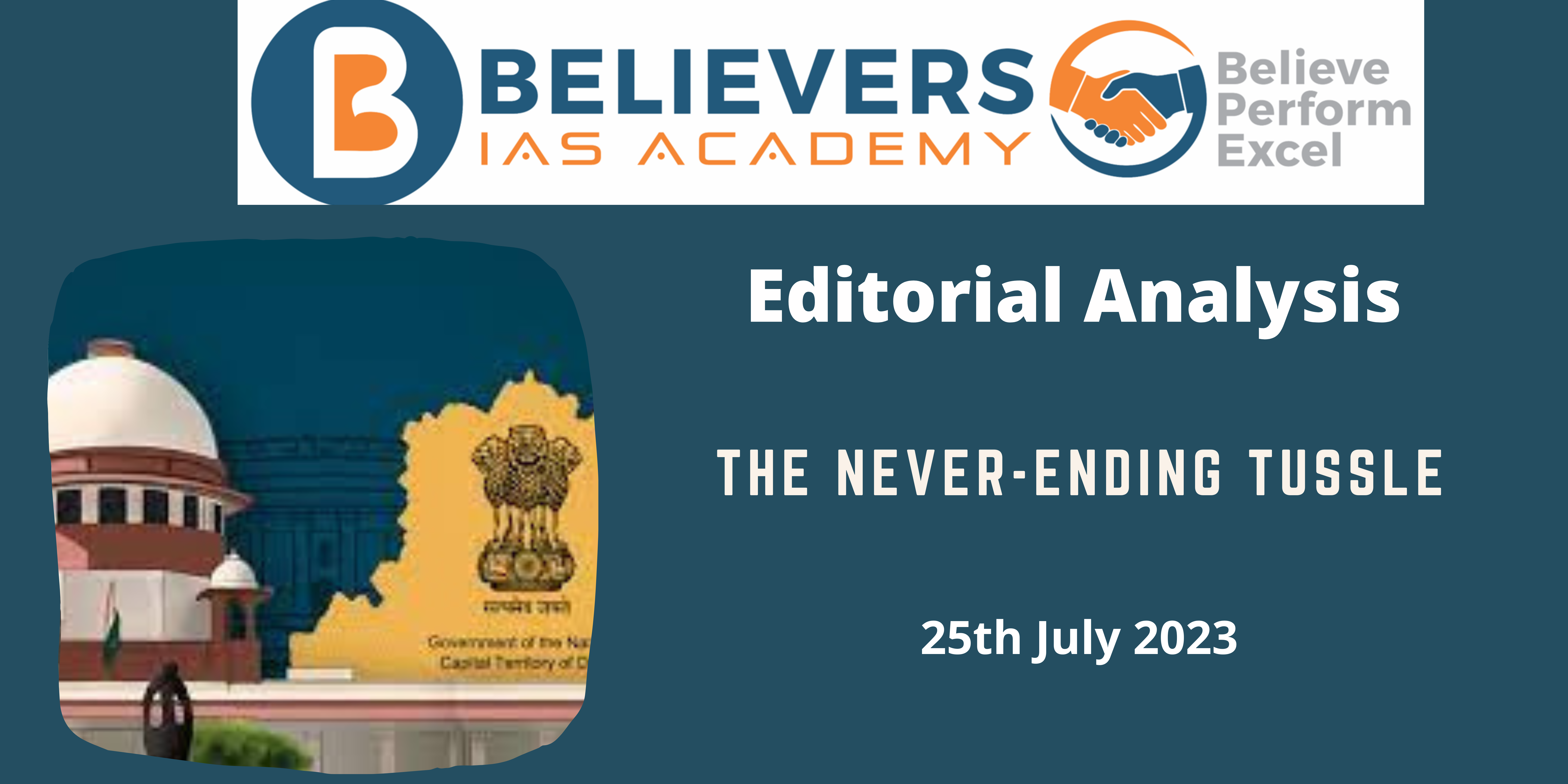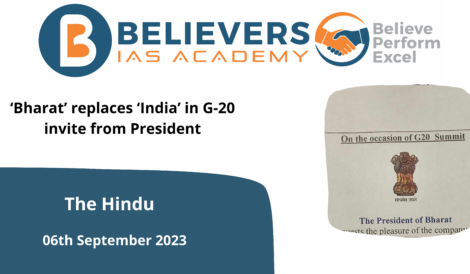The Never-ending Tussle
Context:
The ongoing legal dispute between the Government of the National Capital Territory (NCT) of Delhi and the Centre over the powers and governance of Delhi.
Relevance:
GS – 02 (Co-operative Federalism) (Constitutional Amendments)
Prelims:
- Special Provisions for Delhi under Article 239AA
- NCT
- Schedule VII
- Government of National Capital Territory of Delhi (Amendment) Act 2021
- President
- Ordinance
Mains Question:
- Analyze the constitutional implications of the President of India’s ordinance and the powers of the Delhi government and the Centre in light of the Article 239AA. (250 words)
Dimensions of the article:
- The Legal Saga
- The Dilemma of the Ordinance
- The Constitutional Conundrum
The Legal Saga
- The ceaseless legal entanglement between the Centre and the Government of NCT Delhi regarding their respective powers continues to be an ongoing enigma. The latest episode in this saga revolves around the legality of the recent presidential ordinance, an attempt to establish a new scheme for service regulation in Delhi.
- This contentious move has prompted the formation of a Constitution Bench, marking the third occasion in the past few years where a five-member Bench is called upon to adjudicate the powers of these two feuding entities.
The Dilemma of the Ordinance
- Central to the issue is the ordinance’s endeavor to nullify a significant verdict delivered by a prior Constitution Bench. This verdict had unequivocally ruled that ‘Services,’ classified under Entry 41 of the State List, falls within the executive and legislative domains of the Delhi government, not the Centre.
- The Court’s rationale was lucid: Article 239AA, governing the affairs of NCT Delhi, merely excluded three subjects – police, public order, and land – leaving the remaining subjects under the Delhi government’s jurisdiction. Consequently, the verdict upheld the Delhi government’s authority over appointments, postings, and transfers, stressing that any attempt to extend the Centre’s reach by excluding ‘Services’ would contradict the constitutional framework of Delhi’s governance.
The Constitutional Conundrum
- The three-judge Bench, responsible for referring the ordinance matter to the Constitution Bench, astutely observed that the creation of a new ‘Authority’ to regulate ‘services’ essentially amends Article 239AA of the Constitution, adding it as a fourth subject to the list of excluded ones. However, this action might not necessarily render it invalid.
- Clause 7 of Article 239AA grants Parliament the power to enact laws “for giving effect to, or supplementing” the Article, asserting that such a law would not be deemed a constitutional amendment, despite its consequential impact.
- While the Court acknowledges Parliament’s legislative authority, it also reserves the right to assess the validity of its exercise, especially when it results in the complete exclusion of ‘services’ from the purview of the elected Delhi regime.
- Additionally, the Court highlights a perceived contradiction, wherein one clause seemingly safeguards the existing governance structure of Delhi, while another seemingly allows alterations. A definitive ruling is imperative.
Conclusion:
Despite the legal intricacies and constitutional quandaries that this dispute poses, the political undercurrents and personal interests involved guarantee that the struggle will persist unabated. As India’s highest legal authority scrutinizes the ordinance and the powers of the Delhi government and Centre, the resolution remains uncertain. Only time will reveal the final chapter in this never-ending tussle over the governance of Delhi.




